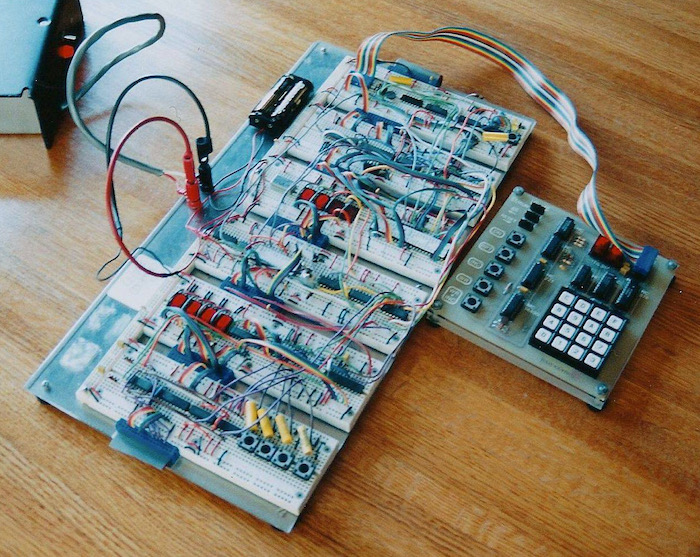About Penrose Laboratory
Roger Penrose discovered a way to tile the infinite plane with pentagonal symmetry. The tiling can be expanded indefinitely, but it never repeats. The Wikipedia article on Penrose tiles is a good source of information. In my version, two diamonds are fitted together according to certain rules. These rules only allow eight different vertex configurations. After a tile is added, the code traverses the perimeter of the tiling, using a lookup table to find vertices that demand the addition of a specific tile. You can see how this works by disabling auto-fill and traversing the boundary one tile at a time.
One of the properties of this way of tiling is that legal local modifications may create an illegal tiling at a distant location. You can see this effect by adding a narrow tile to the default white edge six times in a row. Then toggle auto-fill and force the program to traverse the perimeter until the flawed tiling is complete.
You can also create your own illegal tilings by disabling auto-fill and adding tiles one by one.
Why is the tiling displayed on an oscilloscope?
I built a computer using a Motorola 68008 microprocessor in Tom Hayes' digital electronics class at the Harvard Extension school (pictured below). Once I had the thing wired up properly, I programmed it in machine language to draw Penrose tiles on an oscilloscope, with a user interface consisting of the four buttons on the lower right. Later I refined the program using an assembly language interface that downloaded the code onto a RAM chip. The four buttons reset the display to a wide diamond, allowed the user to select an edge on the perimeter of the tiling, and added a wide or narrow diamond to the selected edge. Then the code filled in all the tiles that were determined by the rules. The program was basically a loop that drew a bunch of lines over and over, while the user buttons triggered interrupts and changed the data. My computer was so awesome that it achieved immortality, meaning I didn't have to disassemble it when the class was over.
One of the best books I have ever read is "The Second Kind of Impossible" by Paul Steinhardt. He and others investigated the possibility of a physical crystalline structure based on Penrose tiles. The book describes how he and his collaborators then managed to actually find such a crystal in the far reaches of Siberia. Highly recommended.

This program is written in React using the same algorithm as the one I wrote in machine language. Lines are drawn using the open source react-lineto package.
Oscilloscope image by Elborgo - Own work, CC BY 3.0, https://commons.wikimedia.org/w/index.php?curid=2841283